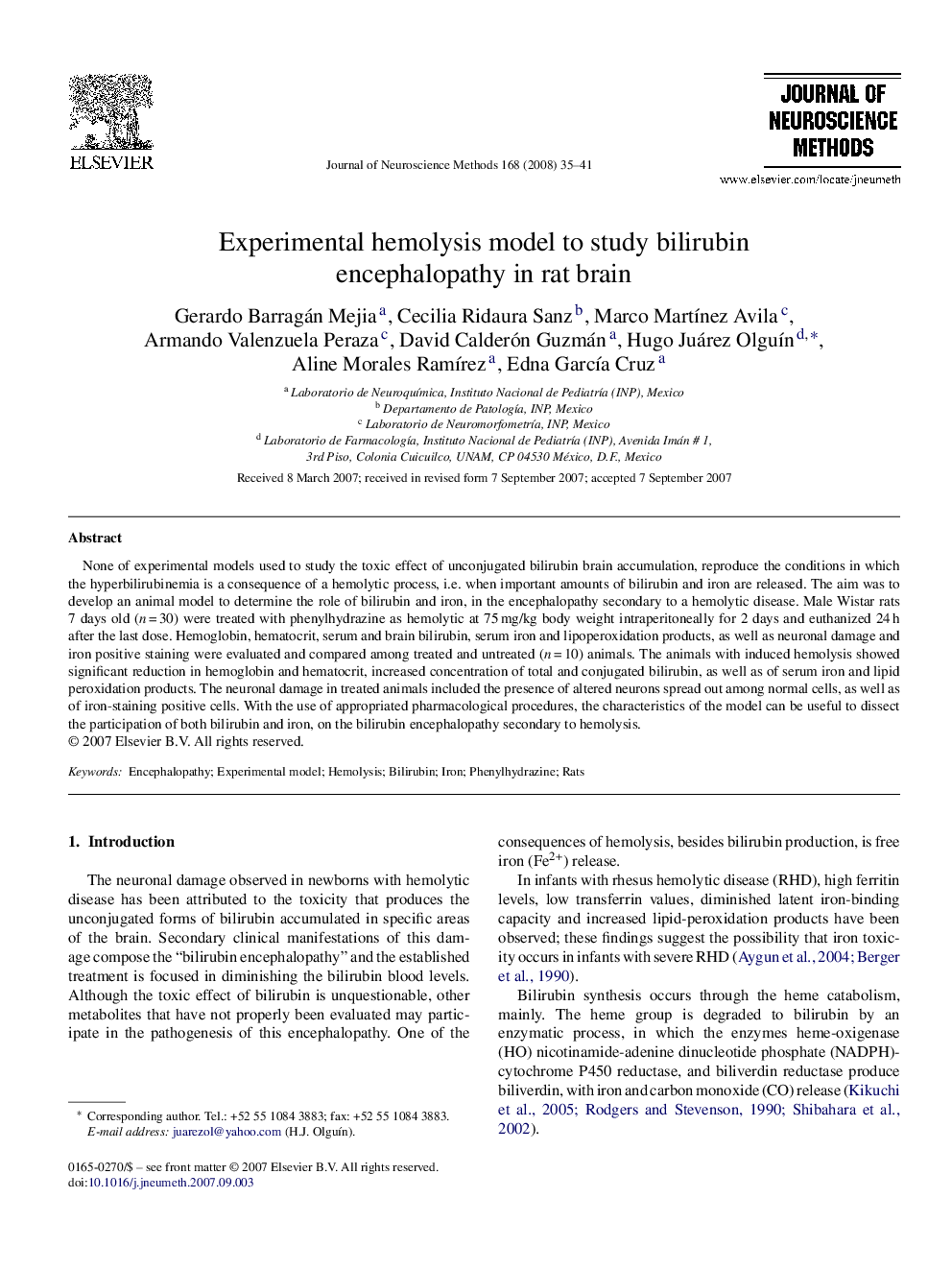| Article ID | Journal | Published Year | Pages | File Type |
|---|---|---|---|---|
| 4336610 | Journal of Neuroscience Methods | 2008 | 7 Pages |
None of experimental models used to study the toxic effect of unconjugated bilirubin brain accumulation, reproduce the conditions in which the hyperbilirubinemia is a consequence of a hemolytic process, i.e. when important amounts of bilirubin and iron are released. The aim was to develop an animal model to determine the role of bilirubin and iron, in the encephalopathy secondary to a hemolytic disease. Male Wistar rats 7 days old (n = 30) were treated with phenylhydrazine as hemolytic at 75 mg/kg body weight intraperitoneally for 2 days and euthanized 24 h after the last dose. Hemoglobin, hematocrit, serum and brain bilirubin, serum iron and lipoperoxidation products, as well as neuronal damage and iron positive staining were evaluated and compared among treated and untreated (n = 10) animals. The animals with induced hemolysis showed significant reduction in hemoglobin and hematocrit, increased concentration of total and conjugated bilirubin, as well as of serum iron and lipid peroxidation products. The neuronal damage in treated animals included the presence of altered neurons spread out among normal cells, as well as of iron-staining positive cells. With the use of appropriated pharmacological procedures, the characteristics of the model can be useful to dissect the participation of both bilirubin and iron, on the bilirubin encephalopathy secondary to hemolysis.
